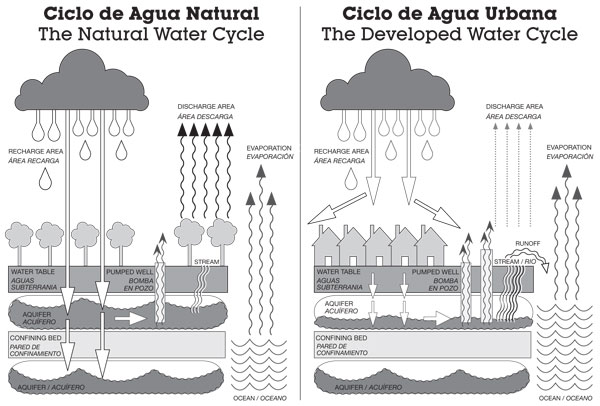An extensive hydrological study of underground water in the Nosara area delivered last April points to an abundance of water. “Based on the findings thus far and the data collected to this point I am of the opinion that significant water exists in the current wells and much more significant resource exists,” wrote DAVID VLETAS, the study’s author, in its introduction.
The multi-part study was commissioned by the ASADA of Nosara located in the American Project, to determine the best locations for future wells, as well as to learn more about the nature and renewability of Nosara’s water resources. The study employed tapped state-of-the-art satellite imagery and other tools used in oil and water prospecting with the expertise of numerous specialists to locate and map the multiple aquifers that underlie the area. It surveyed existing wells and identified a mother load of underground water that has the potential to dramatically out produce existing wells, ensuring water for years to come. Though it is still not known exactly how much water we are talking about or what is the recharge capacity of these aquifers.
But according to Vletas, the issue is money. “The water resource is not quantifiable at this point without dimensions for the area, porosity and aquifer height parameters; any number given would be a wild guess” the geologist says in the study. “This is why we need to drill more wells, lay more pipes and build more tanks. We’re underfunded”, Vletas mentioned during an interview with VON.
The ASADA funded Phase 1 and Phase 2 of the study, at $40,000 each, and now has detailed maps of the area’s aquifers. A new tank should be online by February. The ASADA’s current seven wells can only pump a certain amount of water, and the system’s fragility is demonstrated when power outages, even brief ones, disrupt the pumping system, leading to empty tanks.
“The infrastructure for the water system needs to be double what we think; this is a good rule of thumb in the industry and provides virtually seamless service to customers in the times that breakdowns do occur. This also allows lead time to expand further when growth necessitates it,” the report concludes.
Vletas said a third phase of research, proposed but not funded, would quantify the volume of water in the aquifers, as well as the capacity of the aquifers to be recharged during the rainy season. “More work is required to fully define the reservoirs and their characteristics,” the report states.
This would be very useful for long term planning for development, he said, but is not necessary to locate water to supply local needs for the next few years.
Vletas, President of Eagle Production, Inc., of Texas, has 25 years experience as a petroleum geologist and has been visiting Nosara for years. He hopes that the AyA, the national water authority, will fund similar research in other regions of the Guanacaste Province to help assure the sustainability of development.
Download the complete ASADA study here.

|

